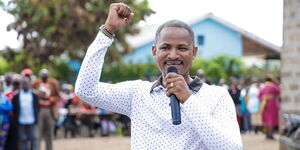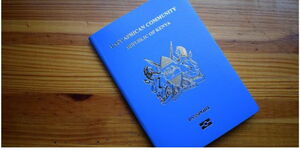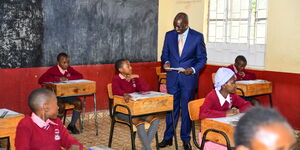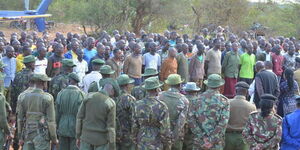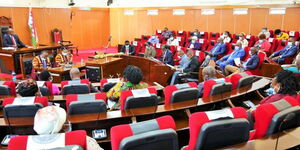Kenya has ramped up its public health defences against the potentially deadly Mpox virus, leveraging the very protocols that proved crucial in battling the COVID-19 pandemic just a few years ago.
With over 500 lives lost to Mpox in the Democratic Republic of Congo (DRC) and the World Health Organisation (WHO) now classifying the virus as a global public health emergency, Kenya has adopted a vigilant stance, particularly in light of its porous borders with neighbouring East African countries.
As Mpox looms on the horizon, Kenya’s borders have become critical control points. Mary Muthoni, Principal Secretary of the State Department for Public Health & Professional Standards, confirmed that measures akin to those deployed during the COVID-19 pandemic are now in full force.
“At the border points, you will find active equipment like thermoguns, thermoscanners, personal protective equipment, handwashing facilities, and hand sanitisers. We are also sensitising the masses on what they need to do to prevent Mpox,” she told Citizen TV on Friday.
The strategy is a deliberate echo of the tactics that helped Kenya navigate the worst of the COVID-19 pandemic. Digital thermometers, now an essential tool in the fight against viral outbreaks, have once again taken centre stage.
These devices, equipped with infrared sensors, can swiftly measure body temperature without physical contact, making them ideal for screening large groups of people at border points. During the COVID-19 crisis, they were vital in identifying potential cases and curbing the virus's spread.
Mpox, caused by a virus in the same family as smallpox, is generally less severe but still poses a significant threat. Originally transmitted from animals to humans, it now spreads primarily through close human contact.
The virus is transmitted through close contact, including sexual contact, skin-to-skin interaction, and even through respiratory droplets. It can also spread via contaminated objects such as bedding, clothing, or towels. This makes public education and hygiene critical components of Kenya's response.
Early symptoms mirror those of many viral infections: fever, headaches, swelling, back pain, and muscle aches. However, the disease's progression can be distressing. Once the fever subsides, a rash often appears, usually starting on the face before spreading across the body.
The rash, which can be intensely itchy or painful, progresses through several stages before scabbing over and eventually falling off. In severe cases, particularly among vulnerable groups such as children, the lesions can cover the entire body, including sensitive areas like the eyes, mouth, and genitals.
The virus is transmitted through close contact, including sexual contact, skin-to-skin interaction, and even through respiratory droplets. It can also spread via contaminated objects such as bedding, clothing, or towels. This makes public education and hygiene critical components of Kenya's response.
Kenya’s vigilance is especially crucial given its porous borders with East African neighbours, where the virus could easily slip through. However, the Ministry of Health has moved quickly to reassure the public. Health Cabinet Secretary Deborah Barasa announced that 12 people who had interacted with the country’s only confirmed Mpox case have been traced, tested, and found negative.
Additionally, six other suspected cases have also tested negative, leaving Kenya with just one confirmed Mpox case, a truck driver who was transiting from Uganda to Rwanda via Kenya. This individual, who was identified on July 29, 2024, has since made a full recovery.
“The Ministry of Health wishes to reassure Kenyans that there is no active case of Mpox disease in the country following the uneventful recovery of the index case,” stated Dr Barasa. “We have screened 12 persons who came into contact with the index case and another six different suspected cases, all of whom have tested negative for the disease. No new confirmed cases have been reported in the country since the first confirmed case.”
Despite these assurances, the government is not taking any chances. Border screenings continue to be rigorous, with health officials maintaining a close watch for any potential new cases. The strategy of using established COVID-19 protocols, which proved effective in managing the earlier pandemic, is seen as a robust response to the current threat.
As the situation in the DRC worsens, Kenya’s proactive measures are vital in preventing the virus from gaining a foothold within its borders. With public health infrastructure in place and lessons learned from COVID-19, the country is better equipped to manage such outbreaks. However, the government continues to urge the public to remain vigilant and to adhere to the preventive measures being promoted.
"Kenya has very strong disease surveillance across the 47 counties at all entry points. We are capable of detecting early and screening is ongoing as we speak. As of 12th August, a total of 250 travellers have been screened across the country against Mpox," stated PS Mary Muthoni.


